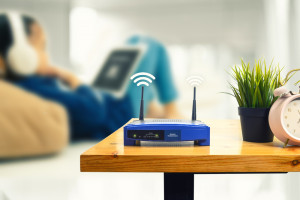What is Malware and How Does It Affect Your Device?
Malware is malicious software created to disrupt or damage your computer and devices. Malware can come in many forms, computer viruses, Trojans, scareware, spyware, keystroke loggers, rootkits, and even ransomware.
Malware attacks are common as criminals attempt to gain access to your data and personal information. It's important to understand how to identify potential malware attacks and how to protect yourself and prevent cyber security vulnerabilities and online security threats.
How to Prevent Malware Attacks with 7 Effective Security Measures
Malware attacks cause serious damage to your computer, device and network infrastructure. Attackers can gain access through one computer and then gain access to every device on the network including CCTV systems. To protect yourself from malicious software, you need to take proactive security measures.
By following these 7 effective security measures, you can prevent malware attacks and free your computer from viruses.
These security measures include scheduled or planned backups of important data, installing anti-virus software on all computers and devices, using two-factor authentication for all online accounts, regularly updating software programs and operating systems, avoiding suspicious links and pop-ups online, disabling unnecessary services on computers and devices, and implementing strong password policies. With the help of these tips and solutions, you can stay safe from malware attacks.
The Best Ways to Detect and Remove Malware from Your Device
Malware is a growing threat to our devices, and it's important to know how to detect and remove it from your device. Malware can be difficult to spot, as it is often downloaded as legitimate software, free blockbuster movies or presented as a legitimate website requesting the user click on vulnerable links. However, there are some signs that can indicate the presence of malware. The most common signs include slower performance, general pop-up ads and pop-up ads advising that your computer is infected with a virus and changes in system settings.
If you suspect your device has been infected with malware, there are several steps you should take to detect, neutralize and remove it. You should run an antivirus scan on your device and update all of your software regularly. If the infection persists after these steps, you may need to completely erase all data on the computer including the operating system. This removes any zero-day malware that may be hiding in the system undetected.
What Are the Most Common Types of Malware & How Can You Protect Yourself Against Them?
Malware is a malicious computer program or code that can disrupt the normal functioning of your system, take control of audio and video, download your personal documents and photo and cause serious damage. There are different types of malware, each with its own unique characteristics and capabilities. Some of the most common types include ransomware, viruses, spyware, and Trojan horses.
It is important to be aware of these threats and take the necessary actions to protect yourself from them. In this article, we will discuss some of the most common types of malware, and their properties. We will also discuss some useful tools for detecting and removing malware such as ransomware virus protection, spyware detection and removal tools, as well as Zeus Trojan Horse removal.
How to Keep Your Data Secure Even After a Malware Attack
Malware attacks can cause damage to your data and complete IT infrastructure. As a result, it’s critical to secure your data even after an attack. By using secure data backup solutions, you can make sure that your data isn’t lost even if the malware does its damage.
Data recovery after a malware attack requires more than just having a reliable backup solution in place. You need to have documented cybersecurity procedures in place so that you can detect and prevent future attacks from happening in the first place. Additionally, it is important to have procedures in place for restoring affected systems and networks to their pre-attack state as soon as possible.
















